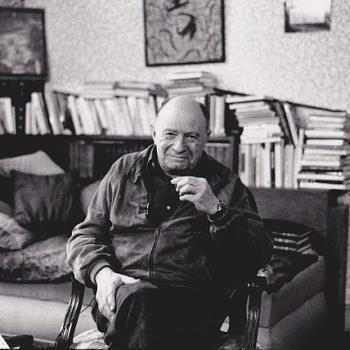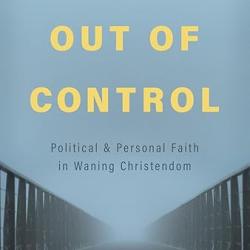I’ve recently read several books by evangelical authors that at least touch on the question of what is “evangelicalism?” Too many of them are adopting Mike Horton’s analogy or metaphor of a “village green.” I don’t like it and here I’ll explain why. I hope this metaphor will not catch on and I’m even dismayed that it is catching on among people I greatly admire and consider fellow postconservative evangelicals.
I must say before launching into my critique, however, that this is not a doctrinal issue or even one where I would draw any kind of line in the sand. I just think it’s a poor metaphor and that metaphors have power to change social reality. I worry that if this metaphor catches on it will doom forever any hope of evangelicalism once again becoming what I knew and experienced during my formative years. (I’ve admitted before that I am like Don Quixote and that my aspiration for evangelicalism may very well be a kind of pipe dream.)
So far as I know the village green metaphor for evangelicalism was created by Mike Horton and published in Modern Reformation. I don’t recall which issue. I’m sure someone will provide that. I know he and I discussed it in dialogues that were public and published in MR and in Christian Scholar’s Review. Those dialogues were edited before publication, though, so I don’t recall if our disagreement about the village green metaphor appeared in print.
In brief, to me, the village green metaphor cannot do justice to evangelicalism as a theological and cooperative transdenominational movement–a kind of ecumenical movement without any intention of “visible and institutional unity” (which has been the goal of much of the more liberal ecumenical movement).
First, the village green metaphor cannot do justice to the movement aspect of evangelicalism. A village green is simply a common space at the center of a village where all the citizens can meet and talk and play games, etc. To me, that would be a better metaphor, from an orthodox Christian perspective, for Christianity as a whole in terms of ecumenical encounters. Eastern Orthodox, Roman Catholic, all kinds of Protestants meet and talk, express their opinions, etc., but share little in common in terms of organized, cooperative efforts or even beliefs. Other than gazing fondly on a cross, they have little in common. Evangelicalism was a movement of relatively conservative (i.e., generously orthodox) Protestant Christians to band together in spite of very real differences about secondary matters to form a common, united front as an alternative to the power and influence of liberal, mainline Protestantism and Catholic Christianity. (For example, both of those had attempted to get the government to restrict its airwaves dedicated to religion to them with the overt intention of excluding evangelical voices.) This evangelicalism, that was birthed out of the fundamentalist movement and revivalism, was (and to a certain extent still is) a movement, not a common space for “God talk.”
Second, the village green metaphor minimizes the common ground shared by evangelicals. I think the great thing about evangelicalism was, has been, could still be, the awareness that many Lutherans, Reformed, Wesleyan, Pentecostal, Free Church, Baptist, Anabaptist (etc.) Christians have much in common compared with secularism and liberal theology and that their shared world view and basic theology is important to promote and can only be promoted adequately if we who hold it stick together–not to the exclusion of our particularities but in spite of them. I suppose it’s difficult for some people to understand this. People in the South tend to struggle to understand it because the culture there has tended to be dominated by evangelical Christianity. In much of the South it’s liberals who have felt the need to form coalitions and support one another and cooperate. But in most of the country, for a very long time, it was (and I dare say still is) evangelical Christians (as defined and described by Bebbington and Noll) that need each other. Let me give an illustration to explain this:
When I was growing up in a Midwestern city in the 1960s (and then in seminary and serving as associate pastor in the same city after college) the city’s Ministerial Association was controlled by liberal pastors. When the school district gave up sponsoring a high school baccalaureate they handed it over to the Ministerial Association who turned it into an anti-war event. The evangelical ministerial alliance (I don’t remember what it was officially called but it, like most of others like it, was associated with the National Association of Evangelicals) then stepped up and sponsored a real baccalaureate for anyone who wanted to attend. But it was a worship service of blessing over the graduates–as baccalaureates were intended to be. That’s one example of what the local evangelical ministerial association did. I personally benefited from it. I knew what the baccalaureate “service” had been at the end of my junior year of high school and wanted no part of that. Fortunately, the evangelical ministerial alliance sponsored a good one for my graduating class and our families and friends and anyone who wanted to attend. It was not exclusive, but it was overtly Christian.
The transdenominational evangelical movement spawned many cooperative efforts like that–evangelistic campaigns (Key 73, Billy Graham associate evangelists’ meetings, Campus Crusade training events, Youth for Christ, Union Gospel Mission, etc., etc.). I’m not saying all of them were what I would want them to be; they had flaws. But compared to nothing and compared with what the liberal churches offered, they were good. A liberal church, the largest church in town, started a “coffeehouse” ministry. As a high schooler I attended it several times and never felt safe there. It was terrible. Drugs were being sold and used, the dancing was sensual, kids were “hooking up” for sex, there was bullying, etc. The church thought it was doing a community service, but it turned out to be worse than nothing–because there was no emphasis on Christ and the leaders “trusted” the kids (no belief in original sin) to police themselves with minimal adult supervision. The evangelical churches struggled to provide alternative spaces for kids with some success. I wish they had done more.
“Village green” simply cannot do justice to the common faith evangelicals share or to our cooperative efforts to provide for those in need spiritually and physically. To me, “village green” trivializes evangelical unity and cooperation. I was greatly inspired by the diversity of denominations represented within evangelicalism when I was young. I was a passionate, “on fire” young Christian (much like many in the YRR movement but without the Calvinism) and needed to be a part of something bigger than my own little church and denomination. Yes, they were my main spiritual “home,” as it were, but they were too small and too narrow to give me the breadth and depth of acquaintance with other Christians that I needed. And what filled that need was much more than a “village green.” May it be again.












